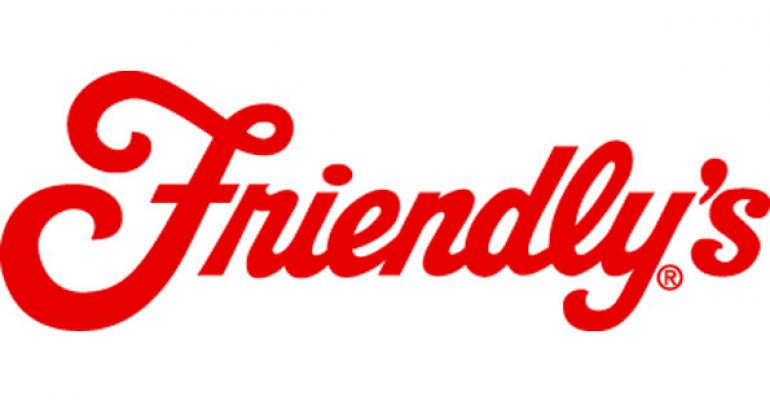J & B Restaurant Partners, a Friendly’s franchisee based in Long Island, N.Y., closed a third of its 36 locations and filed for bankruptcy protection this month amid steeply declining sales and financial losses.
The move marks the second major closure of Friendly’s locations in recent months. In November, a franchisee in Ohio closed all 14 locations in the state with little explanation, according to reports.
J & B Restaurant Partners has been in business since 2001, and owns restaurants in New York, New Jersey and Connecticut. The company expects to exit its voluntary bankruptcy in six months and remodel at least 11 locations over the next three years.
“The closing of restaurants is a very difficult but necessary step in positioning J & B for financial health and a key component to our restructuring plan,” chief operating officer Dawn Petite said in a statement.
John Maguire, CEO of Wilbraham, Mass.-based Friendly’s Ice Cream LLC, said that in the case of both J & B and the Ohio franchisee, Apex Eagle Hospitality Inc., the restaurants being closed are older and are in trade areas that are no longer viable.
Maguire said J & B’s strategy of closing restaurants should strengthen the franchisee in the long run.
“One of the challenges for a brand like Friendly’s is just our age,” Maguire said. “We’ll be 80 years old in July. We have a number of restaurants that have been open around 30, 40, 50 years. The majority of restaurants closed are in trade areas that are just not viable any more. The trade area in retail up and moved five miles, six miles down the road, so there’s not enough traffic or population in the trade area any longer.”
Closing locations, Maguire said, “allows (J & B) to focus on what frankly are some great locations on Long Island and in New Jersey.”
J & B has $14.6 million in debt through four loans with GE Capital Corporation, according to legal filings. The loans were taken out in 2008, 2009 and 2011.
In a statement filed with the court, Petite blamed the economic downturn, rising unemployment and reduced discretionary spending by “historically-loyal customers” for hurting the company’s sales and traffic.
While the economy is recovering, Petite said in the document that consumers are seeking “less expensive dining options.”
In the first nine months of 2014, J & B’s same-store sales fell 13.4 percent, following a 6.8-percent same-store sales decline in 2013. The company attributed the drop in sales to a decline in traffic.
J & B cut costs and overhead in response, but earnings still suffered. In the first three quarters of 2014, J & B generated $46.2 million in revenue, but had a negative EBITDA, or earnings before interest, taxes, depreciation and amortization, of $1.6 million, according to legal filings.
The bankruptcy also came after years in which the franchisee closed or sold other locations. J & B had 32 locations in Long Island in 2011, when it bought 30 additional restaurants in New York, Connecticut and New Jersey for $2.4 million.
Rising food cost effects
(Continued from page 1)
According to bankruptcy documents, doubling the size of the franchise further exposed the company to the economic downturn. Since then, J & B has strategically closed or sold underperforming locations, reducing its unit count to 36 locations by this year. It then closed 12 units just before filing for bankruptcy, bringing the count down to 24 locations.
The franchisee also blamed rising food costs. Petite said in her declaration with the court that the franchisee is required to buy virtually all of its food from the franchisor. But skyrocketing prices for milk, cream and meats hurt operating margins. The price of butter increased 50 percent in the past two years, according to bankruptcy filings, and the price of milk rose 30 percent.
In addition, the franchisee used a strategy of discounts and coupons to bring customers in the door, which hurt margins further, according to bankruptcy documents.
The cost of goods sold increased from 26.2 percent of revenue in 2012 to 27.1 percent in 2014.
Facing “severe liquidity shortfalls,” and struggling to make debt payments, the company ultimately decided to file for bankruptcy.
Remodeling locations, as J & B plans to do, and investing in marketing efforts should help, Maguire said. The company has 134 company-owned locations and 134 franchised units. About 100 of those locations have been remodeled. The company plans to remodel 45 company-owned units by April, and is also investing in television advertising.
In Boston, where each of the brand’s 43 units has been remodeled, a television ad campaign over the summer yielded 4-percent traffic growth and double-digit same-store sales growth. “Boston is our test case of what we’re now doing” for the whole brand, Maguire said.
Contact Jonathan Maze at [email protected].
Follow him on Twitter: @jonathanmaze

